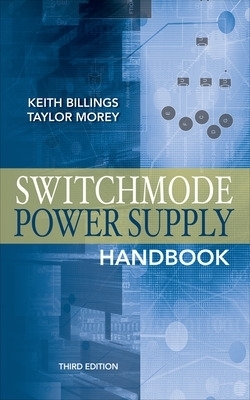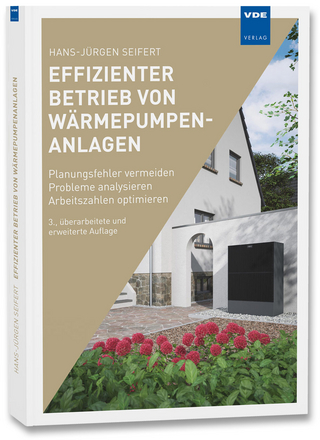
Switchmode Power Supply Handbook 3/E
McGraw-Hill Professional (Verlag)
978-0-07-163971-2 (ISBN)
Publisher's Note: Products purchased from Third Party sellers are not guaranteed by the publisher for quality, authenticity, or access to any online entitlements included with the product.
The definitive guide to switchmode power supply design--fully updatedCovering the latest developments and techniques, Switchmode Power Supply Handbook, third edition is a thorough revision of the industry-leading resource for power supply designers. New design methods required for powering small, high-performance electronic devices are presented. Based on the authors' decades of experience, the book is filled with real-world solutions and many nomograms, and features simplified theory and mathematical analysis.
This comprehensive volume explains common requirements for direct operation from the AC line supply and discusses design, theory, and practice. Engineering requirements of switchmode systems and recommendations for active power factor correction are included. This practical guide provides you with a working knowledge of the latest topologies along with step-by-step approaches to component decisions to achieve reliable and cost-effective power supply designs.
Switchmode Power Supply Handbook, third edition covers:
Functional requirements of direct off-line switchmode power supplies
Power components selection and transformer designs for converter circuits
Transformer, choke, and thermal design
Input filters, RFI control, snubber circuits, and auxiliary systems
Active power factor correction system design
Worked examples of would components
Examples of fully resonant and quasi-resonant systems
A resonant inverter fluorescent ballast
An example of high-power phase shift modulated system
A new MOSFET resonant inverter drive scheme
A single-control, wide-range wave oscillator
McGraw-Hill authors represent the leading experts in their fields and are dedicated to improving the lives, careers, and interests of readers worldwide Taylor Morey, currently a professor of Electronics at Conestoga College in Kitchener, Ontario, Canada, is co-author of an electronics devices textbook, and has taught courses at Wilfred Laurier University in Waterloo. He collaborates with Keith Billings as an independent power supply engineer and consultant, and previously worked in switchmode power supply development at Varian Canada in Georgetown, and Hammond Manufacturing and GFC Power in Guelph, where he first met Keith in 1988. During a 5-year sojourn to Mexico, he became fluent in Spanish and taught electronics engineering courses at the Universidad Católica de La Paz, and English as a second language at CIBNOR biological research institution of La Paz, where he also worked as an editor of graduate biology students’ articles for publication in refereed scientific journals. Earlier in his career he worked for IBM Canada on mainframe computers, and at Global TV’s studios in Toronto.
Part 1: Functions and Requirements Common to Most Direct Off-Line Switchmode Power Supplies; Chapter 1. Common Requirements: An Overview; Chapter 2. AC Powerline Surge Protection; Chapter 3. Electromagnetic Interference (EMI) in Switchmode Power Supplies; Chapter 4. Faraday Screens; Chapter 5. Fuse Selection; Chapter 6. Line Rectification and Capacitor Input Filters for "Direct Off-Line" Switchmode Power SuppliesChapter 7. Inrush Control; Chapter 8. Start-Up Methods; Chapter 9. Soft Start and Low-Voltage Inhibit; Chapter 10. Turn-On Voltage Overshoot Prevention; Chapter 11. Overvoltage Protection; Chapter 12. Undervoltage Protection; Chapter 13. Overload Protection; Chapter 14. Foldback (Reentrant) Output Current Limiting; Chapter 15. Base Drive Requirements for High-Voltage Bipolar Transistors; Chapter 16. Proportional Drive Circuits for Bipolar Transistors; Chapter 17. Antisaturation Techniques for High-Voltage Transistors; Chapter 18. Snubber Networks; Chapter 19. Cross Conduction; Chapter 20. Output Filters; Chapter 21. Power Failure Warning Circuits; Chapter 22. Centering (Adjustment to Center) of Auxiliary Output Voltages on Multiple-Output Converters; Chapter 23. Auxiliary Supply Systems; Chapter 24. Parallel Operation of Voltage: Stabilized Power Supplies; Part 2: Design: Theory and Practice; Chapter 1. Multiple-Output Flyback Switchmode Power Supplies; Chapter 2. Flyback Transformer Design; Chapter 3. Reducing Transistor Switching Stress; Chapter 4. Selecting Power Components for Flyback Converters; Chapter 5. The Diagonal Half-Bridge Flyback Converter;Chapter 6. Self-Oscillating Direct-Off-Line Flyback Converters; Chapter 7. Applying Current-Mode Control to Flyback Converters; Chapter 8. Direct-Off-Line Single-Ended Forward Converters; Chapter 9. Transformer Design for Forward Converters; Chapter 10. Diagonal Half-Bridge Forward Converters; Chapter 11. Transformer Design for Diagonal Half-Bridge Forward Converters; Chapter 12. Half-Bridge Push-Pull Duty-Ratio-Controlled Converters; Chapter 13. Bridge Converters; Chapter 14. Low-Powered Self-Oscillating Auxiliary Converters; Chapter 15. Single-Transformer Two-Transistor Self-Oscillating Converters; Chapter 16. Two-Transformer Self-Oscillating Converters; Chapter 17. The DC-to-DC Transformer Concept; Chapter 18. Multiple-Output Compound Regulating Systems; Chapter 19. Duty-Ratio-Controlled Push-Pull Converters;Chapter 20. DC-to-DC Switching Regulators; Chapter 21. High-Frequency Saturable Reactor Power Regulator (Magnetic Duty Ratio Control); Chapter 22. Constant-Current Power Supplies; Chapter 23. Variable Linear Power Supplies; Chapter 24. Switchmode Variable Power Supplies; Chapter 25. Switchmode Variable Power Supply Transformer Design; Part 3: Applied Design; Chapter 1. Inductors and Chokes in Switchmode Supplies; Chapter 2. High-Current Chokes Using Iron Powder Cores; Chapter 3. Choke Design Using Iron Powder Toroidal Cores; Chapter 4. Switchmode Transformer Design (General Principles); Chapter 5. Optimum 150-W Transformer Design Example Using Nomograms; Chapter 6. Transformer Staircase Saturation; Chapter 7. Flux Doubling; Chapter 8. Stability and Control-Loop Compensation in SMPS; Chapter 9. The Right-Half-Plane Zero; Chapter 10. Current-Mode Control; Chapter 11. Optocouplers; Chapter 12. Ripple Current Ratings for Electrolytic Capacitors; Chapter 13.
| Erscheint lt. Verlag | 16.11.2010 |
|---|---|
| Reihe/Serie | McGraw-Hill HANDBOOKS |
| Zusatzinfo | 300 Illustrations |
| Sprache | englisch |
| Maße | 163 x 239 mm |
| Gewicht | 1266 g |
| Themenwelt | Technik ► Elektrotechnik / Energietechnik |
| Technik ► Nachrichtentechnik | |
| ISBN-10 | 0-07-163971-3 / 0071639713 |
| ISBN-13 | 978-0-07-163971-2 / 9780071639712 |
| Zustand | Neuware |
| Informationen gemäß Produktsicherheitsverordnung (GPSR) | |
| Haben Sie eine Frage zum Produkt? |
aus dem Bereich


